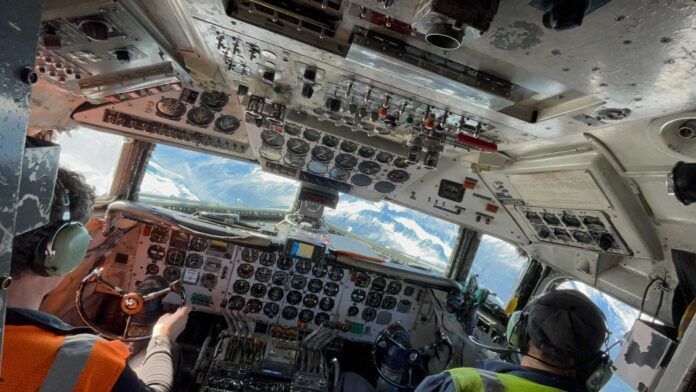Why Aircraft Engines Should Be Hard To Start
My first airplane had an A-75 Continental with no electrical system so you had to hand prop it. If you flooded it, per the manual, you needed to turn the prop backwards several times to “evacuate the cylinders” before trying again and sometimes that worked fine. Sometimes it didn’t and in that case, I learned the best thing to do was just take a break (hand propping a flooded engine can be very frustrating), walk away from it, and find something else to do for about 20 minutes, and then try again. That always worked.
Rolf G.
While I love these old stories, I totally disagree. Application of modern tech would make flying more confidence-inspiring as well as convenient. The basic LyCon design is great and wouldn’t be outperformed by auto conversions BUT they could be transformed with auto technology. Combustion chamber design copied from any current pushrod V8, direct fuel injection and electronic ignition, run 11:1 compression and you could delete the starter and associated weight entirely. With 4 or more cylinders the computer just chooses the cylinder on the power stroke, spritzes a shot of fuel in the combustion chamber and lights the fire then magically the engine is running. Huge efficiency gains, substantial power increase and meaningful weight reduction! BUT with the FAA and subsequent “Business Case” it ain’t never gonna happen and I’ll have to keep using Voodoo to start the Continentals in the T-41s in CO Springs.
Thomas F.
I too flew the DC-6 as engineer and copilot, I never got comfortable starting those R-2800’s, explosions, flames, really tough when cold soaked on the DTW ramp, we always had a ramp guy standing by with a fire bottle until all four were going. I also flew the DC-7, a dream to start, fuel injected R-3350’s, a problematic engine, but sounded great at TO power.
Note, number 2 was started first because it had one of the two hydraulic pumps, number three had the other one. I retired on the 777, just have a cup of coffee and watch it happen!
Bob S.
I’m an 8000+hour flight instructor and banner tow pilot and have started (and flown) most Cessnas, most Pipers, a Mooney, a Citabria, a Bonanza, and a 450 hp supercharged Stearman.
They all have their starting quirks — more of a nuisance than a “perk.” I think those who want engines to be difficult to start are among the egotistical “good ole boy” pilot fraternity.
If we want general aviation to grow, we need remove as many barriers to entry as possible. Anything that can simplify/facilitate the starting of our primitive reciprocating internal combustion engines would be beneficial to this end — until the real game changer comes along: batteries with many times the current available energy density.
An electric airplane would be as simple as turn it on and go. Other benefits: far fewer parts to fail, simpler maintenance, no danger of carbon monoxide in the cabin, zero emissions, no power loss or mixture adjustment with increasing density altitude, smoother, quieter, no weight shift with fuel consumption, less heat so less cooling drag, possible partial electrodynamic recharging during descent, possible range enhancement or free recharge during prolonged parking with solar cells on wings, aerodynamically cleaner nose due to smaller cross-section of electric motor vs. combustion engine. An electric motor is significantly lighter than an equally powerful reciprocating engine. The challenge will be to get batteries with the same range per weight as avgas or diesel.
John F. Kennedy’s “We choose to go to the moon…” speech along with taxpayer money funding NASA, got humans on the moon over 50 years ago. The “X-Prize” got civilian flight to the edge of space via Burt Rutan. We need a “B-Prize” for the first battery to safely offer (without risk of meltdown or fire) sufficiently rapid charging, number of lifetime charging cycles, and energy density to make it a true alternative to combustion fuels. An engineer will need to decide what specifically (numerically) to include in those parameters.
Annonymous
Best Of The Web: Why Wingsuits Are Flight As Pure As It Gets
The early “standards” rogallo wing hang gliders, of which I had several and flew, were as I recall (been quite a while) a 3 to 1 glide, so I can relate a bit. Their sink rate seems to be a bit higher though. The video and flying was amazing, but of course it leaves out all the tedium of getting up to the launch site, or the drop plane climbs, the not fun part, not to mention the arranging to have someone pick you up once you land, that’s what got old about hang gliding, with an engine you can fly totally autonomously. I did not know a suited skydiver had less drag and can go faster, wow!
Tom S.
As is the case with many human pursuits, technologies evolve in tandem. I wonder if wingsuiting would be as popular as it is without GoPro cameras. Certainly, GoPro cameras bring the thrill of wingsuiting to life.
Dana N.
Poll: How Many Hours Did You Fly Last Year?
- Not enough!
- None.
- Nil, as cost too much in the UK.
- I cannot fly solo due to health problems and the multiple pain meds I just take. I grieve.
- About 3. The airplane has been in the shop since early February of 2022…
- 400
- 475 hours at 87 years old.
- 532
- 685
- 800 hours.
- 850
- Can I log “wishful” hours?



































